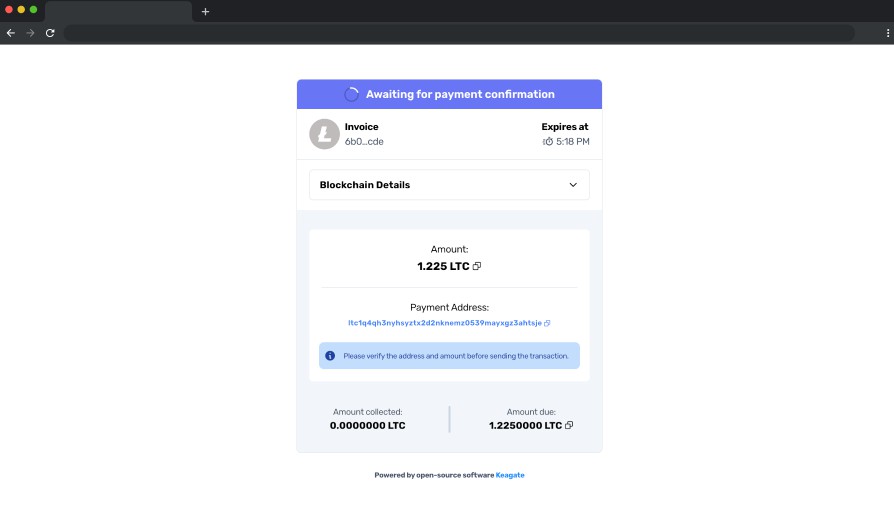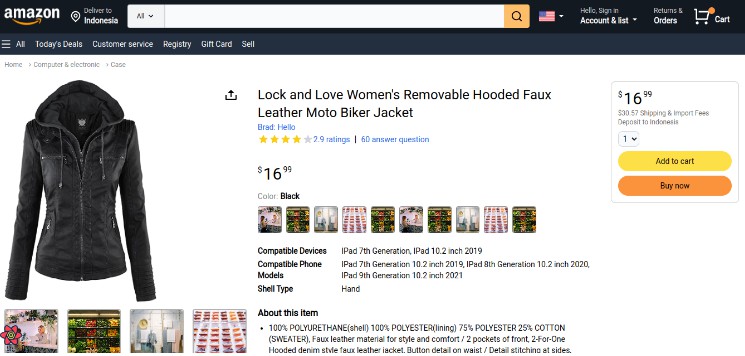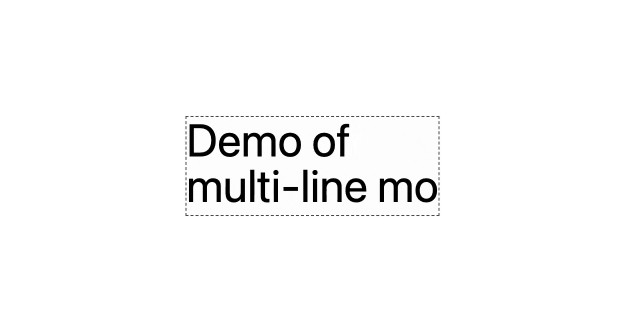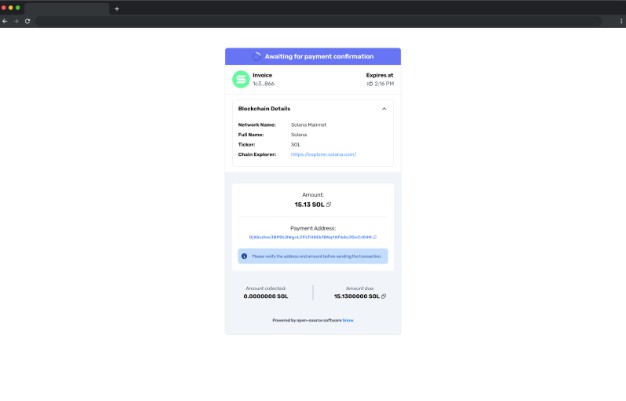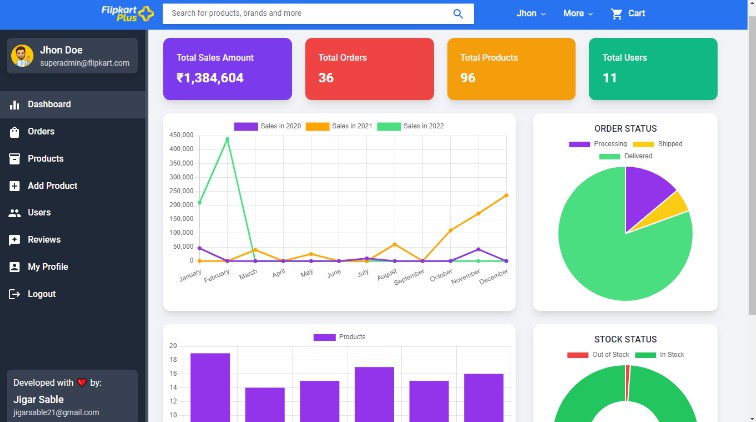Keagate (ki:geɪt) – A High-Performance Cryptocurrency Payment Gateway
About the Project
Keagate is a self-hosted, high-performance cryptocurrency payment gateway. Payments can be administered via API for flexibility or with the built-in invoicing client (image below).
Supported currencies: Bitcoin, Ethereum, Dogecoin, Solana, Litecoin, Polygon, Dash, Ripple (coming soon), Tron (coming soon).
Purpose
- No KYC
- No fees, middleman, or escrow
- Self-hosted/Private
- Easily extensible
- Lightweight and highly performant
Funds go directly to your wallet via a one-time address that is generated for each payment.
Installation
One-liner
The purpose of this installation script is to get Keagate up-and-running quickly in a Linux environment. The CLI will guide you in configuring, managing, and securing the instance.
bash -c "$(curl -sSL https://raw.githubusercontent.com/dilan-dio4/Keagate/main/packages/scripts/keagate.sh)"
Alternate:
curl -o keagate.sh https://raw.githubusercontent.com/dilan-dio4/Keagate/main/packages/scripts/keagate.sh
chmod +x keagate.sh
./keagate.sh
This helper script has been tested on…
- Ubuntu 18+
- Debian 10+
- Amazon Linux 4.14+
- CentOS 7.9+
…via AWS and Azure.
This script should run successfully on most flavors of Linux with some configuration. Otherwise, use the manual build, as it’s fairly straightforward.
Manual Installation
Prerequisites
- MongoDB – Install
- Running on your machine OR remotely via a connection string
- Web server (like Nginx or Apache2) – Install
- Serving as a reverse proxy to
localhost:8081 8081is the default port that Keagate runs on, can be changed via the PORT configuration option.
- Serving as a reverse proxy to
- Node > 14 and NPM – Install
- Use of
nvmto manage Node and NPM is recommended
- Use of
# +++ Don't have Node?
curl -o- https://raw.githubusercontent.com/nvm-sh/nvm/v0.39.1/install.sh | bash
nvm install 16
nvm use 16
# ---
npm i -g pnpm
pnpm setup
pnpm -g pm2
git clone https://github.com/dilan-dio4/Keagate
cd Keagate
pnpm i
pnpm run build
# +++ Configure Keagate with:
node packages/scripts/build/configure.js
# --- OR manually (see Configuration section)
pm2 start packages/backend/build/index.js --name Keagate --time
Configuration
Keagate requires some configuration. This is done via a file called local.json in /config, next to default.json. This file will automatically be used when you start Keagate. Note that parameters in local.json will overwrite those in default.json.
There are two methods to configure Keagate, and they can be used in conjunction with each other.
CLI
Keagate has a built-in CLI to build configurations in packages/scripts. After you’ve cloned and built the package. Head to the root Keagate directory and execute the following:
node packages/scripts/build/configure.js
Note – this CLI is automatically launched in the one-liner installation script.
The CLI will write the config/local.json file upon completion unless one already exists. In that case, it will write to config/local2.json and ask that you manually merge your new parameters, as needed.
Custom
Create or open the file local.json in /config. You can use the provided default.json file as a reference (your local.json will override these).
The schema of the Keagate configuration can be seen (in TypeScript) at packages/common/src/config.ts.
Currencies
To configure a single currency, add an object with the key of the currency’s ticker with the following attributes:
Ticker can be one of 'LTC', 'BTC', 'ETH', 'DOGE', 'SOL', 'DASH', or 'MATIC'. See example.
| Key | Description | Required | Default |
|---|---|---|---|
ADMIN_PUBLIC_KEY |
Public key (address) of your admin wallet | Yes | null (string) |
ADMIN_PRIVATE_KEY |
Private key of admin wallet. Only needed if you plan on programmatically sending transactions | No | null (string) |
Protected options
This section details specific configuration parameters that should be handled with extra care. A malicious actor could manipulate the integrity of payments if they had access to these parameters.
There’s a built-in script to securely generate and print these values at random:
node packages/scripts/build/setupSeeds.js
# OR
ts-node packages/scripts/src/setupSeeds.ts
# Prints
{
"INVOICE_ENC_KEY": "5036...9cc3",
"SEED": "eb08...3afc",
"KEAGATE_API_KEY": "9fac8f7d...c6568f97",
"IPN_HMAC_SECRET": "e50dd645...ea5baf54"
}
| Key | Description | Required | Default |
|---|---|---|---|
SEED |
Seed for transactional wallet generator. Must be a 128-bit hex string. Protect this value in production | Yes | null (string) |
KEAGATE_API_KEY |
Api key that will be required in administrative request’s keagate-api-key header. Protect this value in production |
No | ‘API-KEY’ (string) |
INVOICE_ENC_KEY |
Key that will be used to encrypt payment IDs when distributed via invoice. Protect this value in production | Yes | null (string) |
IPN_HMAC_SECRET |
Key of the HMAC signature that is set in the x-keagate-sig header of each POST request when using Instant Payment Notifications. Protect this value in production |
No | null (string) |
Other options
| Key | Description | Required | Default |
|---|---|---|---|
IP_WHITELIST |
List of IP address [“1.1.1.1” , “2.2.2.2”,…] to be whitelisted for administrative requests | No | [] (string[]) |
TRANSACTION_TIMEOUT |
Milliseconds by which payments will be valid for. After that, the payment is expired | No | 1200000 [20 Minutes] (number) |
TRANSACTION_MIN_REFRESH_TIME |
Minimum milliseconds by which transactions will idle between refreshes | No | 30000 [30 Seconds] (number) |
TRANSACTION_SLIPPAGE_TOLERANCE |
Percentage of a total payment that is discounted as slippage.Example: a TRANSACTION_SLIPPAGE_TOLERANCE of 0.02 for a 100 SOL payment will be fulfilled at 98 SOL. | No | 0.02 (number) |
BLOCKBOOK_RETRY_DELAY |
Milliseconds to wait before re-trying a failed Blockbook request. | No | 5000 (number) |
MONGO_CONNECTION_STRING |
Connection string for MongoDB instance including any authentication. | No | ‘mongodb://localhost:27017’ (string) |
MONGO_KEAGATE_DB |
Mongo database to use for storing/managing payments | No | ‘keagate’ (string) |
IS_DEV |
For development only. Turn on testnets for given currencies and activate development features | No | false (boolean) |
HOST |
Your domain or IP that Keagate is running on. This is used for aesthetics and has no functional effect on Keagate | No | null (string) |
PORT |
The port that Keagate’s backend API will run on | No | 8081 (number) |
Example
Your config/local.json could look something like:
{
"LTC": {
"ADMIN_PUBLIC_KEY": "MY_WALLET_ADDRESS",
"ADMIN_PRIVATE_KEY": "MY_PRIVATE_KEY"
},
"KEAGATE_API_KEY": "abcd123",
"IP_WHITELIST": ["1.1.1.1","2.2.2.2"]
// ...
}
Payment Lifecycle
API Method
The workflow for creating & confirming payments in the API-driven method is as follows:
-
Invoke the
createPaymentroute. Pass the following parameters in the JSON body:- amount – The total value of the payment
- currency – Shorthand name of the desired currency (e.g.
"LTC") - ipnCallbackUrl – URL to synchronously send payment status updates to
- Optional extraId – Some external identification string (useful for manually managing the identity of payment with
getPaymentsByExtraId)
-
Notify your customer to send the amount to the publicKey returned from
createPayment.- Optional Display other metadata as well, for a streamlined user experience. Use the screenshot above as a reference.
-
Wait for your customer to send the payment.
- Optional Invoke the
getInvoiceStatusroute on a timer from the customer’s device to provide real-time updates. Note: this route doesn’t return any sensitive information.
- Optional Invoke the
-
Confirm and process the payment in your IPN route after receiving a CONFIRMED status of a payment of the same id or extraId.
Invoice Client Method
The workflow for creating & confirming payments with the built-in invoice client is as follows:
-
Invoke the
createPaymentroute. Pass the following parameters in the JSON body:- amount – The total value of the payment
- currency – Shorthand name of the desired currency (e.g.
"LTC") - Either or both of:
- Optional extraId – Some external identification string (useful for manually managing the identity of payment with
getPaymentsByExtraId)
-
Direct users to the URL route provided in the
invoiceUrlattribute returned fromcreatePayment.- Note: this is not a full URL, just a path. It should be appended to the URL of your Keagate server.
-
Confirm and process the payment with either method:
- If you set ipnCallbackUrl, with your IPN route after receiving a CONFIRMED status of a payment of the same id or extraId.
- If you set invoiceCallbackUrl, with the Invoice Client Callback Url page that customers are directed to after the invoice client observes a finished payment.
Invoice Client Callback Url
Two query parameters are appended to this URL when customers are directed to it from the invoice client:
- invoice_id – The encrypted id of the payment (as seen in the
invoiceUrlattribute ofcreatePayment). - status – The [assumed] status of the payment: “CONFIRMED”, “FAILED”, “EXPIRED”, etc. This is just to help you visually notify the customer in your site, but cannot be trusted (see below).
You must still confirm the payment server-side. This is because a malicious customer could just manually go to this route and set the status to CONFIRMED. On your backend, use getPaymentStatus to actually validate the status.
Note: you can send either a true database id or invoice_id [which are just encrypted database ids] to getPaymentStatus. Keagate can figure out which id it is based on the input length.
Once you’ve validated the payment status via a server-side request from the invoiceCallbackUrl page, you can confirm and process the payment as normal.
Instant Payment Notifications
To be notified of payment updates in real-time, use instant payment notifications (IPN).
Use IPNs
- Make sure you have configured the IPN_HMAC_SECRET attribute in Configuration. This will allow you to guarantee the origin and trust in the integrity of incoming messages.
- Have access to some API or serverless function that can be invoked publicly via URL.
- Pass this URL into the
ipnCallbackUrlattribute of your createPayment requests.
Just like that, IPNs are all set up on Keagate. A POST request will be sent to the ipnCallbackUrl with a JSON object like that of TypeForRequest.
Before using these notifications, the last thing to do is validate all incoming messages via HMAC.
Validate IPN Messages
The previously configured IPN_HMAC_SECRET is used as a key in the sha-512 HMAC signature generated for the x-keagate-sig header of each notification.
Note: be sure to sort the request body alphabetically before generating your HMAC.
Here’s a NodeJS example of validating this header in Express.
var crypto = require('crypto')
var express = require('express')
const app = express()
app.use(express.json())
app.post('/ipnCallback', (req, res) => {
// +++ Generate my signature
const hmac = crypto.createHmac('sha512', IPN_HMAC_SECRET)
hmac.update(JSON.stringify(req.body, Object.keys(req.body).sort()))
const signature = hmac.digest('hex')
// ---
if (signature === req.headers['x-keagate-sig']) {
// Good to go!
const id = req.body.id
// ...
} else {
// This notification may be spoofed...
}
});
Development
Development experience and extensibility are the utmost priority of this package.
To get started:
- Clone this repo.
- Install
pnpmglobally withnpm i -g pnpm cd Keagate && pnpm i- Add a MongoDB connection to the
MONGO_CONNECTION_STRINGattribute inconfig/local.json, along with some admin wallet credentials and the other required configuration parameters. For development, the Mongo Atlas free tier works great. pnpm run devto start the invoice client and backend.- Any changes in
packages/invoice-client/srcwill be automatically reflected on refresh. - Any changes to the source of
packages/backend/srcwill be reflected automatically viats-node-dev. - Any changes to
config/local.jsonhave to be manually refreshed.
- Any changes in
The backend will run at 127.0.0.1:8081. You can see your Swagger API docs at http://127.0.0.1/docs. Also, a test IPN callback server will run at 127.0.0.1:8082/ipnCallback and a test invoice client redirect static site will be available at http://127.0.0.1/dev-callback-site.
Adding an API Route
Keagate follows the Fastify plugin pattern. Place your route in packages/backend/src/routes. The default export of the file should be a function that takes a Fastify instance as a parameter. In that function, add your route to the provided Fastify instance. **Be sure to add a schema to your route via the RouteShorthandOptions type exported from Fastify. Schemas should be built with TypeBox.
The schemas will appear in your Swagger docs for a unified developer experience.
Finally, in packages/backend/src/index.ts, register your new route like so:
import createPaymentStatusRoute from './routes/paymentStatus';
import createPaymentsByExtraIdRoute from './routes/paymentsByExtraId';
import create_YOUR_FUNCTIONALITY_Route from './routes/YOUR_FUNCTIONALITY'; // <--
// ...
server.register(createPaymentStatusRoute);
server.register(createPaymentsByExtraIdRoute);
server.register(create_YOUR_FUNCTIONALITY_Route); // <--
Use packages/backend/src/routes/activePayments.ts as a reference of an authenticated route.
Use packages/backend/src/routes/invoiceStatus.ts as a reference of an unauthenticated route.
Customizing the Invoice Interface
The invoice client is a statically built React package (via Vite). This static build is served in backend. This functionality can be seen here.
Editing the react package will automatically build to packages/invoice-client/dist, so just refresh the page to see any changes.
The source of invoice-client‘s React project is pretty straightforward, so those familiar with React (& TailwindCSS) should have an easy time making their desired alterations.
